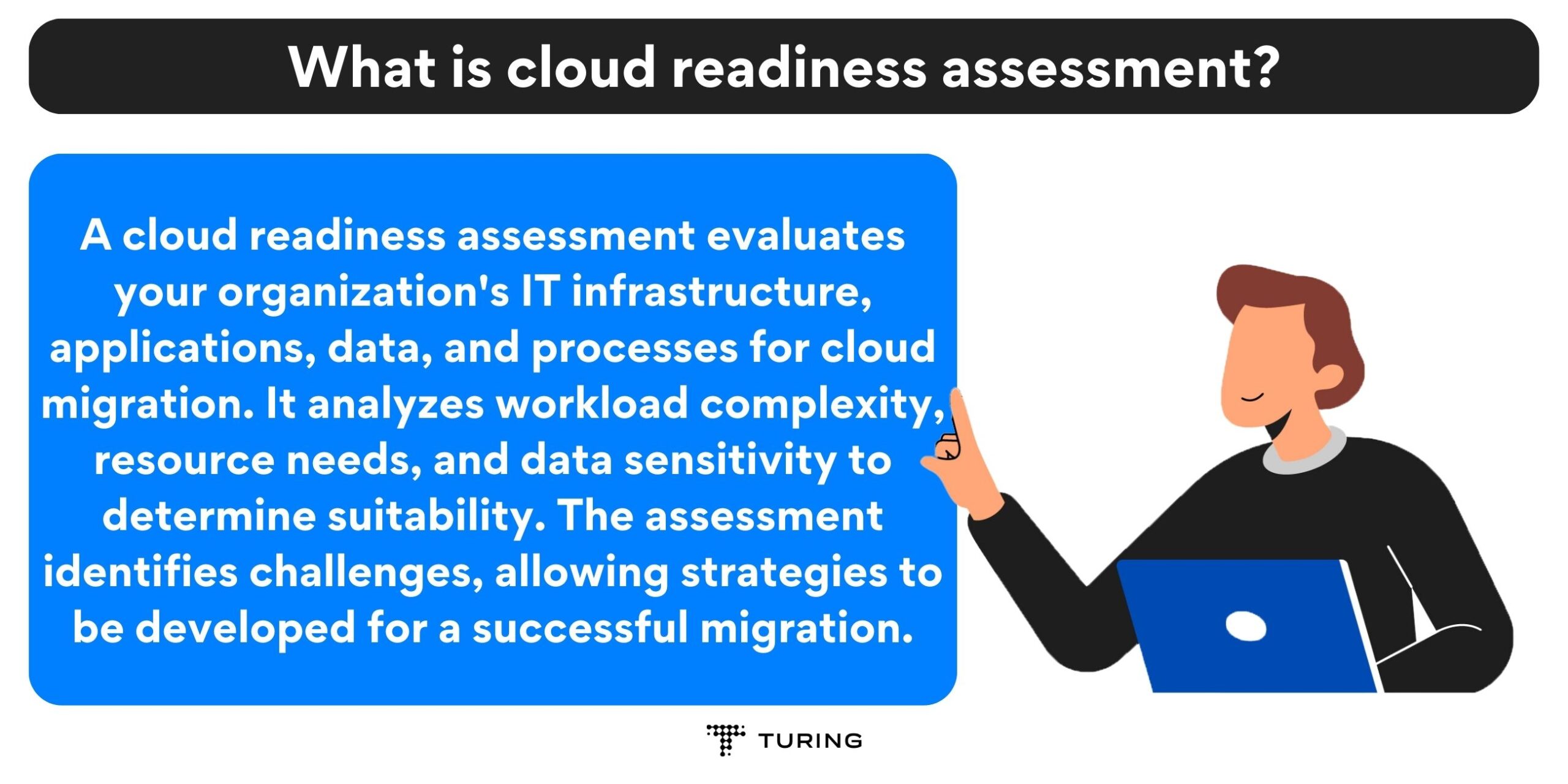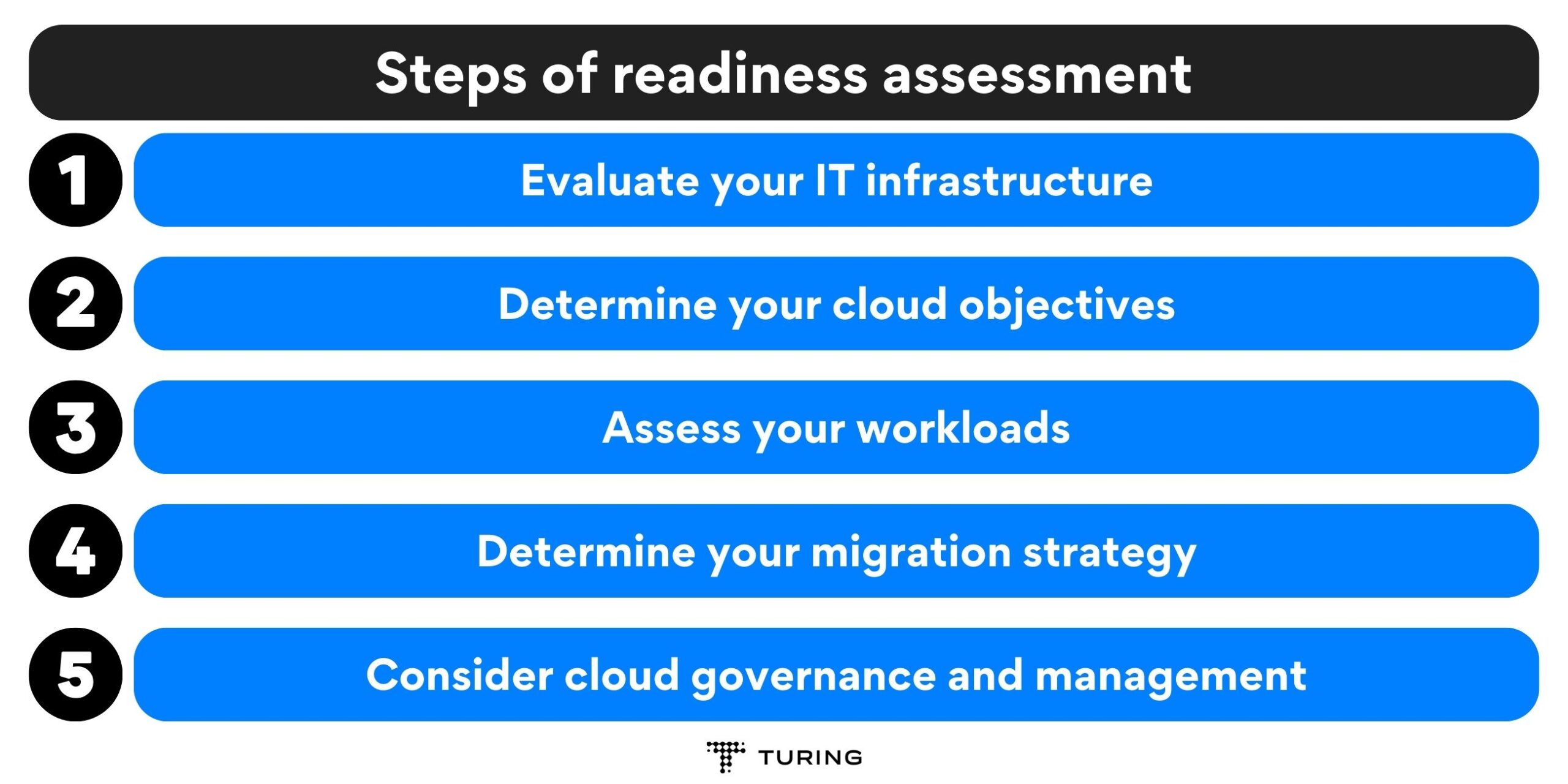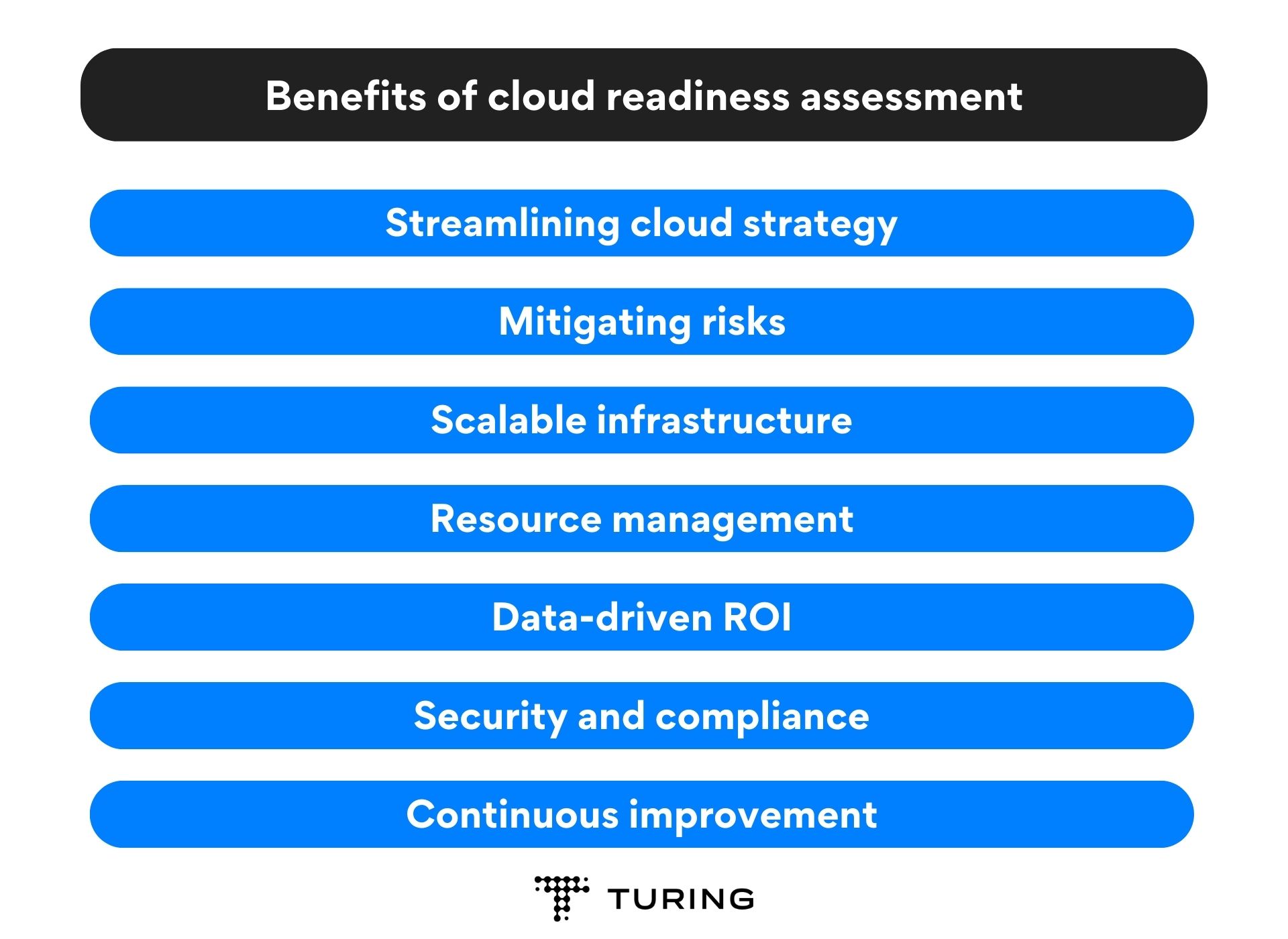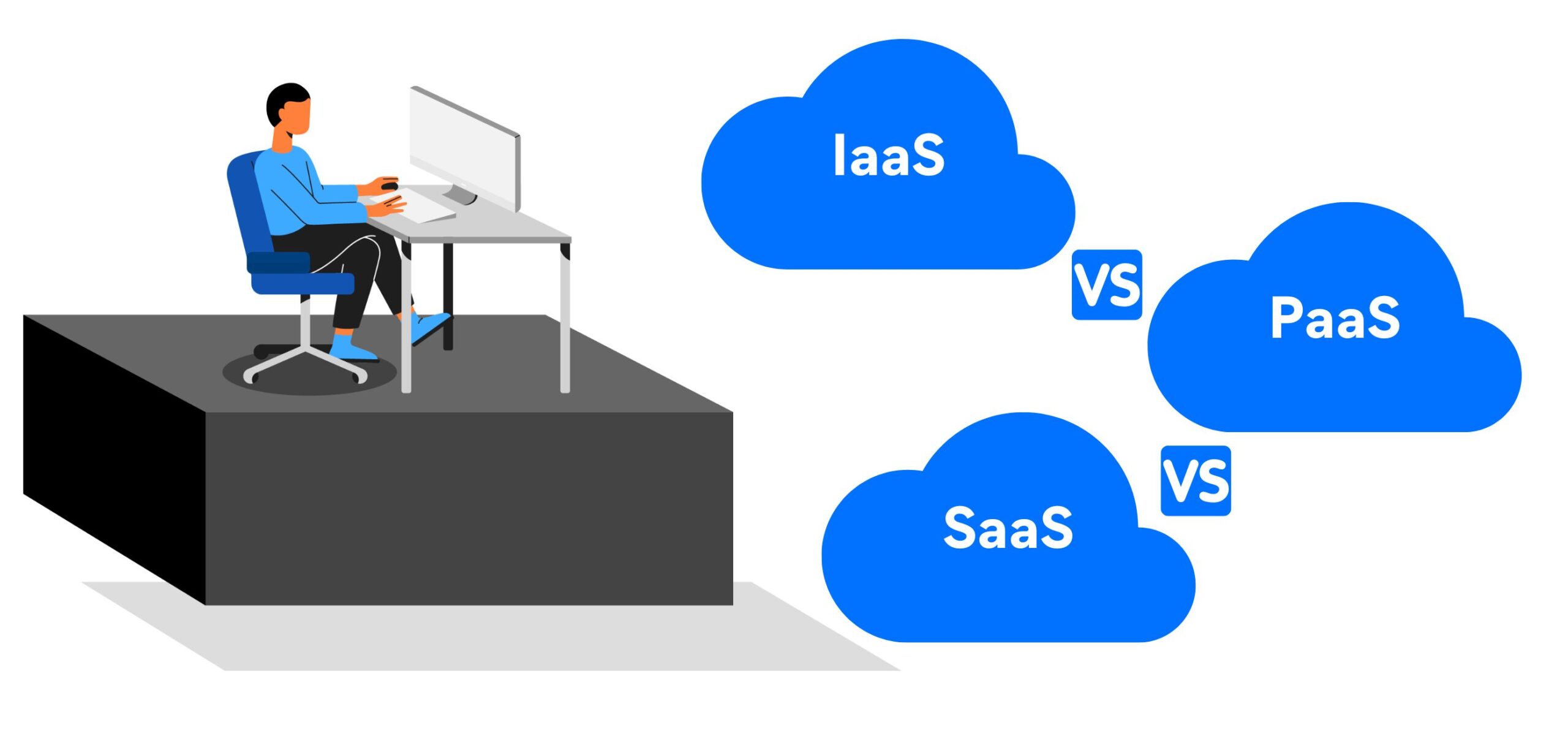Cloud Readiness Assessment: Key Considerations and Best Practices
As cloud computing continues to transform the way businesses operate, organizations are increasingly looking to move their business applications to the cloud. However, navigating cloud migration can be challenging, and requires careful planning and preparation. Before making the move, it is important for organizations to assess their cloud readiness, to ensure that they have the necessary infrastructure, resources, and processes in place to support a successful migration.
In this blog post, we will discuss some key considerations and best practices for assessing your organization’s cloud readiness, including evaluating your IT infrastructure, determining your cloud objectives, assessing your workloads, determining your migration strategy, and considering cloud governance and management.
What Is a Readiness Assessment?

What is cloud readiness assessment?
A readiness assessment is a process of evaluating your organization’s existing IT infrastructure, applications, data, and processes to determine their suitability for cloud migration. The assessment involves analyzing various factors, such as workload complexity, resource requirements, and data sensitivity, to determine which applications and processes are suitable for the cloud. By conducting a thorough readiness assessment, you can identify potential roadblocks and challenges that could impact the migration process, and develop strategies to mitigate these risks.

Steps of readiness assessment
-
Evaluate Your IT Infrastructure
The first step in assessing your organization’s cloud readiness is to evaluate your existing IT infrastructure. It is essential to identify any potential roadblocks or challenges that could impact the migration process. For instance, you need to check whether your hardware and software are compatible with cloud platforms. It is also important to check for legacy software that may require significant upgrades. Conducting a comprehensive evaluation of your IT infrastructure will provide you with insights into the resources and infrastructure you will require to support a successful migration. -
Determine Your Cloud Objectives
Before embarking on cloud migration, it is important to determine your organization’s cloud objectives. This involves identifying the specific business goals that you hope to achieve through the use of cloud computing. For instance, you may be looking to reduce IT costs, improve scalability and flexibility, or enhance security and compliance. Understanding your objectives will help you select the right cloud platform and services to meet your needs. -
Assess Your Workloads
When assessing your organization’s cloud readiness, it is important to evaluate your workloads to determine which applications and processes are suitable for the cloud. This involves analyzing factors such as workload complexity, resource requirements, and data sensitivity. Some workloads may be better suited for public cloud services, while others may require a private cloud or hybrid cloud approach. By assessing your workloads, you can determine the best approach for migrating your applications to the cloud. -
Determine Your Migration Strategy
Once you have evaluated your IT infrastructure, identified your cloud objectives, and assessed your workloads, it is time to determine your migration strategy. This involves selecting the appropriate migration approach, such as a lift-and-shift, re-platforming, or rehosting. It also involves developing a detailed migration plan, including timelines, resource requirements, and risk mitigation strategies. Your migration strategy should be aligned with your cloud objectives and workloads to ensure a successful migration. -
Consider Cloud Governance and Management
As you prepare to migrate to the cloud, it is important to consider how you will govern and manage your cloud environment. This includes establishing policies and procedures for cloud usage, monitoring and optimizing cloud performance, and ensuring compliance with regulatory requirements. It is also essential to consider how you will manage cloud costs, which can quickly spiral out of control if not properly managed.
Benefits of Cloud Readiness Assessment

Benefits of cloud readiness assessment
By evaluating your organization’s readiness for the cloud, you can identify potential roadblocks and challenges that could impact the migration process, and develop strategies to mitigate these risks. You can also ensure that you have the necessary infrastructure, resources, and processes in place to support a successful migration. The benefits of cloud readiness assessment are numerous, consider the following examples:
- Streamlining Cloud Strategy: Cloud assessments ensure tailored cloud strategies, maximizing cost savings, scalability, and agility for businesses.
- Mitigating Risks: Identifying potential challenges early allows for proactive steps, leading to a smoother cloud transition.
- Scalable Infrastructure: Evaluating existing IT infrastructure helps in optimizing architecture for best performance in the cloud.
- Resource Management: Pinpointing gaps in IT resources enables strategic investment in workforce upskilling and streamlined processes.
- Data-Driven ROI: Assessments provide insights for data-driven decisions, accelerating and maximizing the cloud investment’s return.
- Security and Compliance: Assessments consider regulations and data protection, ensuring secure and compliant cloud environments.
- Continuous Improvement: Establishing a baseline helps monitor progress and remain agile in the ever-evolving cloud computing landscape.
However, there are also some potential challenges to be expected in conducting a cloud readiness assessment. For example, the process can be time-consuming and resource-intensive and may require the involvement of multiple stakeholders across the organization. Additionally, the assessment may uncover issues that require significant investment or resources to address, which can impact the overall business case for cloud migration.
Cloud Readiness Assessment Tools and Templates
Cloud readiness assessment tools and templates can make the process easier and more efficient. They can help you identify potential issues and provide a framework for evaluating your IT infrastructure, cloud objectives, workloads, migration strategy, and cloud governance and management. Turing leverages best practices and frameworks defined by Hyperscalers to be translated to customer needs. These frameworks enable organizations to safely decide on readiness to move to the cloud and the best approach to move to the cloud. The following tools are integrated into turing services during execution for the organization.
AWS Cloud Adoption Readiness Tool (CART)
The AWS Cloud Adoption Readiness Tool (CART) provides an automated assessment of your organization’s readiness to migrate to AWS. The tool is designed to help organizations assess their progress with cloud adoption and identify gaps in organizational skills and processes. Your CART report includes a heatmap and radar chart with detailed scoring information and resources to help you improve your readiness score.
Azure Cloud Adoption Framework
The Azure Cloud Adoption Framework provides a comprehensive guide to help organizations plan and execute a successful migration to Azure. It includes tools, templates, and best practices for evaluating your cloud readiness, selecting the right migration approach, and managing your cloud environment. It is a full lifecycle framework that enables cloud architects, IT professionals, and business decision-makers to achieve their cloud adoption goals.
Azure vs AWS: Which is Better? | Turing
Google Cloud Readiness Assessment
The Google Cloud Readiness Assessment provides a free assessment of your organization’s cloud readiness. It evaluates your IT infrastructure, workloads, and security and compliance posture, and provides recommendations for a successful migration to Google Cloud.
Conclusion
In conclusion, assessing your organization’s cloud readiness is an essential step in the cloud migration process. By evaluating your IT infrastructure, determining your cloud objectives, assessing your workloads, determining your migration strategy, and considering cloud governance and management, you can ensure a successful migration to the cloud. While there are potential challenges in conducting a cloud readiness assessment, the benefits of a thorough assessment far outweigh the potential risks. Cloud readiness assessment tools and templates can help streamline the process and provide valuable insights to ensure a successful migration.
Tell us the skills you need and we'll find the best developer for you in days, not weeks.













